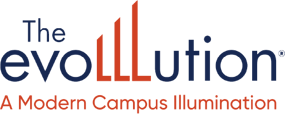Published on
Attention Span and Search Habits: Implications for Digital Libraries

Introduction
Smartphones. Apps. Ads. Information is coming at us in seconds, faster than ever before in human history. One psychologist studying attention span found that between 2004 and 2012 the average attention span dropped from 2.5 minutes to 75 seconds (Mills, 2023). Even when many of us try to concentrate, the notifications ding or vibrate to get us to check our phones, stand up to stretch, take a deep breath and remind us to feed the dog.
These changes in the human attention span, from early childhood through adulthood, have important implications for how people learn, make decisions and use information in an ecosystem that’s already complex.
For digital libraries and information aggregators like the Learn & Work Ecosystem Library, whose business includes constructing user interfaces and search functions, the issue of diminished attention spans raises practical questions:
- Do changes in attention span affect how people search for information?
- How do we design information systems to support both the quick scanners and the deep divers?
- Can we—or should we—try to slow down searchers with the hope of facilitating more thoughtful learning habits?
Fast Answers, Fewer Clicks
Multiple studies by Google and other researchers have shown that few people click past the first page of search engine results. An analysis of four million Google search requests found that only 0.63% of users clicked on something from the second page of results (Dean, 2025). Another study expanded the analysis to include demographic variables on a smaller sampling of users in Germany and Switzerland but still found that only 3% of the clicks landed on results beyond the first page (Urman & Makhortykh, 2023).
In the age of Google and so much information at our fingertips, including the rise of hands-free tools and AI assistants, it’s not surprising that fewer people are taking the time to look beyond immediate answers.
While businesses seeking to improve their search engine optimization (SEO) drive most studies, the underlying implication is that consumers have little time (or inclination?) to look past the first answers. AI appears to increase the ease of instant gratification by distilling the most likely answers into understandable summaries, eliminating even the need to click.
For information curators, this distilling of information is a challenge. If a high-quality source is buried on page two or three—or not indexed well—it might as well not exist, which can lead to propagating repetitive answers or, worse still, misinformation.
Organizing Information in Bite-Sized Chunks
The popularity of microlearning reflects this shift. Many credential providers like higher education institutions and employers delivering upskilling and reskilling training are using microlearning to help busy individuals gain the necessary skills and knowledge (Ingram Nissen et al., 2024). Short videos, gamified modules and bite-sized content are being designed for users to consume quickly—and they are often provided in a modular, mobile-friendly format. While retention may suffer, the appeal lies in immediacy: Learners can complete trainings during their lunch break or between meetings.
The usefulness of microlearning is evident, but whether this style of learning leads to grasping new concepts well remains to be seen. In traditional classrooms, a quality aspect of learning is discussion and the ability to wrestle with the topic and clarify understanding with the instructor. Perhaps AI will be implemented in the future in microlearning to alleviate the lack of this aspect, but the rich dynamic of teacher and pupil will never be the same. On the other hand, when the videos and other chunks are practical information that learners can immediately apply in their lives and jobs, the adage that repetition is the mother of all learning will apply—and the repetition will cement the initial bite-sized learning.
Catalogs, Repositories and Searching—Oh My!
The average academic library catalog or online search engine is not constructed to return the most relevant answers on the first page, whereas the standard for Google is closer to ten results as the best. Often, trial and error are involved in discovering the correct search term to find relevant books and articles. And even then, an irrelevant result from the search is not uncommon.
This leaves information professionals asking: Should we imitate commercial search engines? Or is there still value in slowing down the search to foster deeper understanding?
To be fair, sometimes searchers are asking AI random, often unimportant questions, like “What’s the tallest building in Portland?” or “Who does South African actor Arnold Vosloo look like?” or “Give me suggestions for naming my new cat.” In a digital library focused on education, workforce development and policy, the questions—and consequences—can have higher stakes. It’s unlikely the answers to which college someone should attend or what programs are available for recently incarcerated learners are found easily by asking Google or other AI-assisted search engines.
What Can Information Professionals Do in this Changing Landscape?
Information professionals can take several actions in this rapidly evolving tech landscape. Consider these eight:
- Design for both scanning and deep dives. Provide summaries or TL;DR (too long; didn’t read) sections at the top of long content, but also make it easy to access the executive summary, full report, underlying data or key data points.
- Add visual navigation tools. Use infographics, timelines or filterable (searchable) charts to help users quickly grasp connections among topics, projects and stakeholders.
- Make glossary terms easily accessible and understandable. Ensure content is as jargon-free as possible and provide access to defined terms in understandable language.
- Use personalized search tools. Incorporate better tagging, autosuggested search terms and natural language queries—like commercial search engines but tailored for users.
- Chunk content and context. Break down large resources into smaller, bite-sized content anchored in context.
- Make quality components apparent. Let users know when something is a peer-reviewed study, a policy brief or an opinion piece. When people skim content quickly, transparency about quality is more essential.
- Make assistance available. Have staff to assist users to help them navigate more efficiently. This could include humans and AI bot assistants in the case of the Learn & Work Ecosystem Library's Library Assistant bot.
- Intentionally build in user slowdowns. Consider incorporating slowdowns as a feature. These might look like a pop-up reminder about related resources or a prompt to “See how this connects to…” These can encourage reflection and slow down users seeking information.
There’s good news and not-so-good news in the growing attention span and search habit dilemma. The good news is that there are several actions information professionals can take to help users seeking information quickly. We’ve suggested the above eight, and there are no doubt others.
The not-so-good news is that attention span and search habits are indeed changing for many of us, which is resulting in an acceptance of the first answer, which may not be the best answer.
So, the next time we ask Google a question, let’s take a moment to ask ourselves whether the first answer is the best. Many of those very apps demanding our attention are mindfulness apps, and pausing to take the time to dive deeper is often a good choice. Maybe in the slowing down there will be some unexpected pearls of information we find when we go just a bit further.
Sources
Dean, B. (2025, April 16). We Analyzed 4 Million Google Search Results. Here’s What We Learned About Organic CTR. Backlinko. https://backlinko.com/google-ctr-stats
Ingram Nissen, T., Edelman, E. A., Steinmark, L., Logan, K., & Reed, E. K. (2024). Microlearning: Evidence‐based education that is effective for busy professionals and short attention spans. Journal of Genetic Counseling, 33(1), 232–237. https://doi.org/10.1002/jgc4.1809
Mills, K. (Host). (2023, February). Why our attention spans are shrinking, with Gloria Mark, PhD. (Episode 225) [Audio Podcast episode]. In Speaking of Psychology. American Psychological Association. https://www.apa.org/news/podcasts/speaking-of-psychology/attention-spans
Urman, A., & Makhortykh, M. (2023). You are how (and where) you search? Comparative analysis of web search behavior using web tracking data. Journal of Computational Social Science, 6(2), 741–756. https://doi.org/10.1007/s42001-023-00208-9



